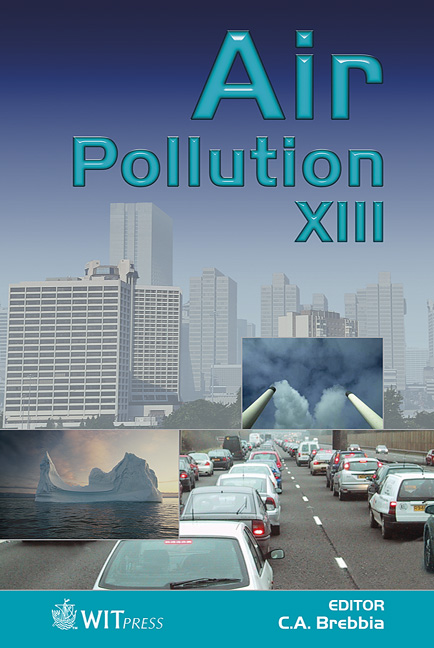Temporal And Spatial Variation Of Particle-bound Polycyclic Aromatic Hydrocarbon (PAH) Concentration And PAH Compositions At Different Particle-size Ranges In The Urban Air Environment In The Bangkok Metropolitan Area
Price
Free (open access)
Transaction
Volume
82
Pages
12
Published
2005
Size
719 kb
Paper DOI
10.2495/AIR050571
Copyright
WIT Press
Author(s)
T. Hoshiko, K. Yamamoto, K. Fukushi & T. Chetwittayachan
Abstract
Polycyclic aromatic hydrocarbon (PAH) concentration were measured to investigate their temporal and spatial variations and PAH compositions at different particle-size ranges at the roadside and general areas in the Bangkok metropolitan area (BMA) in September 2003 (rainy season) and April 2004 (dry season). Real-time monitoring was conducted using photoelectric aerosol sensors (PAS) and air samplings were conducted by a low volume cascade air sampler, MOUDI. The PAH average concentrations were lower in the dry season. The primary cause was considered to be the seasonal change of wind direction. The main periodical components of PAH concentration variation were the periodicity of 0.33, which was considered as a traffic related factor, and 0.5 and 1 day, as complex factors of meteorological elements and traffic. PAH compositions were classified into two groups at above and below 1 μ m of the particle-size ranges and the ratios of low molecular PAHs were higher in the PAH compositions above 1 μ m in the rainy season. Keywords: polycyclic aromatic hydrocarbons (PAHs), photoelectric aerosol sensors (PAS), MOUDI, periodicity, PAH composition, PAH profile, particle- size range, rainy and dry season, roadside, general area.
Keywords
polycyclic aromatic hydrocarbons (PAHs), photoelectric aerosol sensors (PAS), MOUDI, periodicity, PAH composition, PAH profile, particle- size range, rainy and dry season, roadside, general area.





